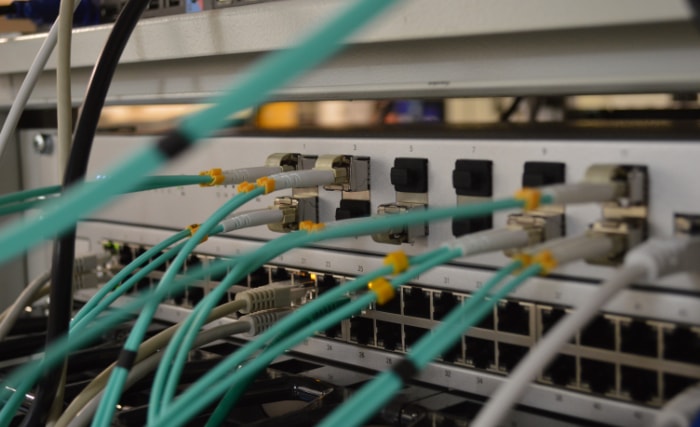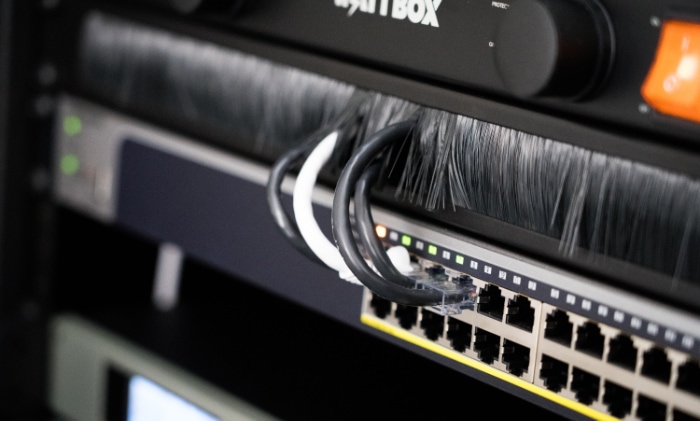Web Server vs. Application Server
The computer programs and information that are stored in a network are then stored in a repository known as a server. Programmers can access the repository at any time. Two types of servers are commonly used to create websites: a web server and an application server.
The former is responsible for handling the operations related to the development of the applications, while the latter is mainly used for the maintenance of the company's backend business applications.
In this article, we will look at what both of these terms mean, how they work, how they are different, and how they interact together for a seamless user experience.
What Is a Web Server?
A web server is hardware and software that handles requests sent over the Internet and is typically used for web hosting or the storage of data for various web-based applications.
Web server hardware is an example of a client/server model, which means it can be connected to the Internet and used to exchange data with other devices, while the software that runs on it controls how users access hosted files.
The web server mainly stores and processes web pages and delivers them to users. Besides handling HTTP (Hypertext Transfer Protocol), web servers also support other protocols such as SMTP (Simple Mail Transfer Protocol) and File Transfer Protocol.
How Does a Web Server Work?
A web server hardware device stores various files related to a website, while the software used by web servers ensures that a website's content is delivered to its users. It is composed of various components, and one of these is an HTTP server, which can read and understand URLs and HTTP.
When a web browser, such as Google Chrome or Mozilla Firefox, needs to access a file that's stored on a website's server, it will send a request to the web server using HTTP, and the web server will then find the content and send it to the browser.
When a web browser requests a page from a server, it will follow three steps:
The first step is to provide a unique URL, which can be found in the browser's address bar.
The second step involves getting the IP address of the domain name, which can be translated through the DNS or through the browser's search engine.
The browser will then send a request to the webserver to retrieve the file that's stored on the website's server. The web server will then respond and provide the requested page. If the page is not present or if something goes wrong, the browser will receive an error message.
What Is an Application Server?
An application server is a type of program that's goal is to provide its clients with the necessary access to its business logic, which is a type of code that creates dynamic content.
It can be used to provide various specialized functions for a service or an application, and it can be a part of a network or a distributed network.
Although the communication between an application server and its clients can be done in the form of HTTP messages, it is not necessary to use this type of protocol for this type of interaction. Instead, protocols such as the CGI version are commonly used for this type of interaction.
How Does an Application Server Work?
Application servers are used in web-based applications that have a 3-level design.
- Level 1 – This is typically a GUI interface located at the client end.
- Level 2 – The application server.
- Level 3 – The backend servers.
The client first requests the web server. The web server then passes the request to the application server, which then gets the necessary information from the backend servers. The backend servers then send the requested information back to the client.
There are a variety of approaches that are used by web servers to process requests, such as JavaScript, CGI, and ASP.
What Is the Difference Between Static and Dynamic Web Servers?
A web server can serve either dynamic or static content. The former refers to the type of content shown, while the latter allows for changes and updates.
A static web server is typically composed of a computer and HTTP software and is considered to be static because it will send files to a browser as if they were hosted.
On the other hand, A dynamic web browser is typically composed of various software components, such as a database and an application server. The database can be used to update files before they are sent to the browser.
With dynamic web browsers, the generated content can be generated automatically depending on the request from the database. However, this process is more complex.
Differences Between Web Servers and Application Servers
- The web server includes simply a web container, but the application server includes both a web container and an EJB container.
- A web server is useful for static content, while an application server is used for dynamic content.
- A web server consumes fewer resources, while an application server is more resource-consuming.
- The operating environment for web applications is typically set up by a web server, while an application server does the same for corporate applications.
- Multithreading is supported by web servers but not supported by application servers.
- An application server has more capacity than a web server.
- Application servers use more HTTP and HTML protocols, while web servers use GUI, RPC/RMI, and GUI protocols.
- For non-resource-intensive processes, web servers are supported. On the other hand, application servers support resource-intensive processes.
- Connections and transactions are not supported by web servers. On the other hand, application servers support connection pooling and transactions.
- A web server's fault tolerance is low compared to that of an application server. Application servers, on the other hand, have high fault tolerance.
- Examples of web servers that are commonly used are Lighttpd and sun java system web servers, and some examples of application servers include glass fish and Jboss
How Do the Two Interact
A typical website will run on multiple web servers to generate static and dynamic content, and these servers will then run applications that display the generated content.
A load balancer and reverse proxy are typically placed in front of multiple web servers to route traffic and redirect to the appropriate server, depending on the request.
Conclusion
Both terms are very generic and sometimes used interchangeably, but that is not always the case.
Web server: A web server typically comprises a computer and HTTP software. It then serves content to a browser using the protocol known as HTTP.
Application server: On the other hand, an application server is typically a type of software that exposes business logic.
The main difference between an application server and a web server is that the latter exposes business logic while the former only serves content to a browser.
In most cases, a web server is used to create the front end of an application. This type of software exposes business logic and allows the user to interact with it.





